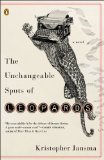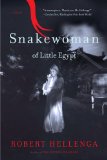Summary | Excerpt | Reading Guide | Reviews | Beyond the book | Read-Alikes | Genres & Themes | Author Bio

The latest novel by the Pulitzer Prize-winning author of March is ambitious yet succeeds in captivating its audience. With themes of art, conservation, religious persecution, and history that span over 500 years, this book could be intimidating to some. But any fears are immediately set to rest with the introduction of the first-person narrator, Hanna Heath, whose casual delivery and humor make for easy reading. Here's Hanna as she prepares to be the first person to touch the manuscript in a century:
"As many times as I've worked on rare, beautiful things, that first touch is always a strange and powerful sensation. It's a combination between brushing a live wire and stroking the back of a newborn baby's head."
Hanna's story, set in the present-day,
alternates with the manuscript's journey,
which is revealed backwards. As Hanna tries
to unravel the mysteries of the artifacts
she uncovers, the reader is plunged into a
story about each artifact, set in that time.
Brooks's skill is such that she writes about
history in a familiar way, with well-drawn
characters you come to care about. The flow
of the novel is never interrupted despite
the jumps in the timeline.
Upon reading the first "flashback," you
might wonder how the story within a story is
relevant to the plot. Have faith in Brooks'
good, succinct descriptions and her
storytelling ability, but prepare yourself
for some heartbreak and unanswered
questions. Brooks provides enough
information to explain the origin of each
artifact, but leaves gaps in the story to
allow for imagination to work. The reader
still ends up knowing more than Hanna, which
gives the book a kind of edge.
The manuscript in question is a Haggadah,
the story of the Jews' exodus from Egypt
that is read by Jews during Passover.
Clearly, there is symbolism in Brooks'
selection of a Haggadah. But the novel isn't
just about the stories within, or Hanna's
work on the Haggadah. Between the
developments in Hanna's personal and
professional life, there are plenty of plot
twists to propel the book along.
By the end, the Haggadah's value will truly
be appreciated, along with the sacrifice and
suffering that went into preserving it. The
title encapsulates it all: it's about the
people of the book, because if not for them,
the Haggadah would not have survived.
Brooks's larger message, one that's
particularly apt today, could ultimately be
about how diverse cultures influence and
enrich one another.
About the Author
In her books, Geraldine Brooks likes
assuming the personas of
different genders and
times. Her 2001 novel,
Year of Wonders,
is set in 17th
century England. March, is
told from a man's
perspective during the
Civil War. She is
innately familiar with
some of the locales she
writes about. Not only
is she a native
Australian, but she used
to cover crises in
Bosnia, Somalia, and the
Middle East for The
Wall Street Journal.
She is married to Tony
Horwitz, author of a
number of non fiction
works including
Blue Latitudes.
They have one child and
three dogs, and divide
their time between homes
in Martha’s Vineyard,
Massachusetts, and
Sydney, Australia.
Interviews at
BookBrowse.
![]() This review was originally published in The BookBrowse Review in January 2008, and has been updated for the
January 2009 edition.
Click here to go to this issue.
This review was originally published in The BookBrowse Review in January 2008, and has been updated for the
January 2009 edition.
Click here to go to this issue.

If you liked People of the Book, try these:

The Unchangeable Spots of Leopards
by Kristopher Jansma
Published 2014
An inventive and witty debut about a young man's quest to become a writer and the misadventures in life and love that take him around the globe

by Robert Hellenga
Published 2011
A novel packed with wit, substance, and emotional depth, Snakewoman of Little Egypt delivers Robert Hellenga at the top of his form.
Your guide toexceptional books
BookBrowse seeks out and recommends the best in contemporary fiction and nonfiction—books that not only engage and entertain but also deepen our understanding of ourselves and the world around us.